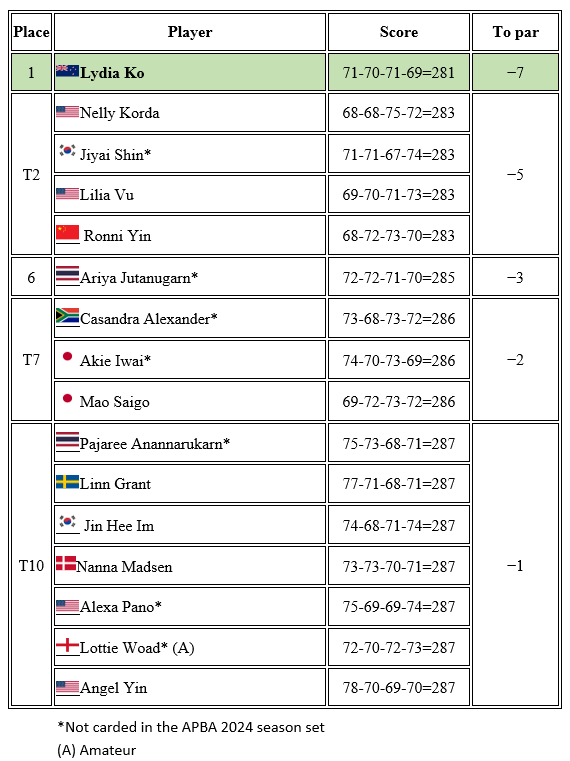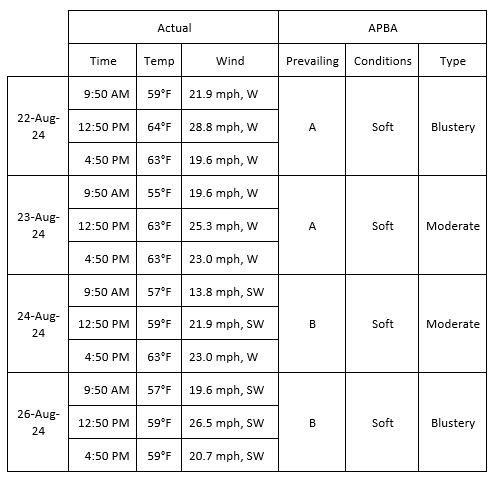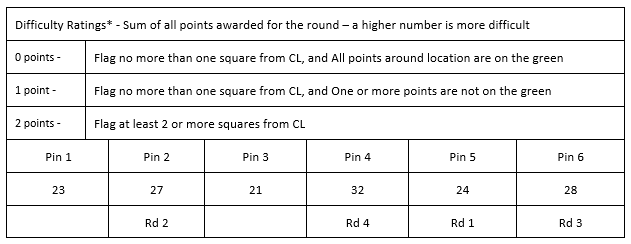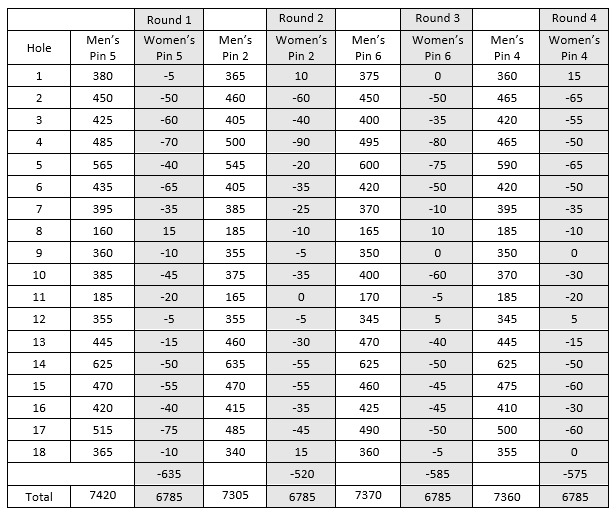For my latest APBA Golf tournament replay, I am taking on the 2024 Women’s Open at St. Andrews. This post discusses the actual event and the setup for my replay.
The Actual Tournament at St. Andrews
Tournament Background
The AIG Women’s Open, originally the Women’s British Open, began in 1976 at Fulford Golf Club in York, England, with Jenny Lee Smith as the inaugural champion. Over the years, the tournament has become one of the most prestigious events in women’s golf. In 2019, AIG became the title sponsor, rebranding the event as the AIG Women’s Open. In 2001, it was elevated to a major championship on the LPGA Tour.
From 2007 to 2018, the event continued to grow with notable victories by Inbee Park and Georgia Hall, who became the first Englishwoman in 14 years to win in 2018. The event has been held at prestigious courses like Royal Lytham & St. Annes and Turnberry, becoming a key fixture in women’s golf.
2024 Event
The 2024 AIG Women’s Open was an exceptional event, marked by a series of unforgettable moments. The tournament took place from August 22 to 25, 2024, at the historic Old Course at St Andrews, Scotland. The prestigious tournament saw participation from 144 players representing 29 countries, which was later reduced to 82 players after the cut. The course, known for its challenging layout, had a par of 72 and stretched 6,784 yards. ESPN recorded the cut line at +4 with only 18 players under par by the finish. The prize fund for the tournament was $9,500,000, with the winner’s share a record $1,425,000.
2024 Results
The final round was contested in light rain with temperatures in the high 50s and winds gusting from the southwest, creating headwinds of 20 mph or more on the back nine. These conditions made finishing the final nine holes even more challenging than usual. Lydia Ko emerged as the champion at 7-under par for the tournament (71-70-71-69).
Ko had to wait patiently near the 18th green as other top players, including Nelly Korda, Lilia Vu, and Jiyai Shin, all had a shot at the lead. The victory was particularly significant as it came just two weeks after Ko won the gold medal at the 2024 Summer Olympics in Paris.
The runner-up positions were keenly contested with Korda, Vu, Shin, and Ronni Yin all finishing at 5-under par, just two strokes behind Ko. The final round of the tournament was filled with drama and excitement. Ko, who started the day in fourth place, made three birdies over the first 14 holes, joining Korda and Vu at the top. Her decisive birdie on the 18th hole secured her victory.
Korda, who held a share of the lead at the time, doubled the par 5 14th after flying the green and under hitting her chip back onto it. She then faced another setback with a bogey on the 17th hole, which dashed her hopes of winning. Vu needed a birdie on the 18th to force a playoff but could only manage a bogey after missing a 20-foot birdie putt. She finished in a four-way tie for second with Korda, Shin, and Yin.
In addition to the top contenders several other players delivered notable performances. Georgia Hall from England began the tournament with a 1-under 71, placing her in the top 10 after the first round. Lottie Woad claimed the Smyth Salver award as the leading amateur, finishing tied for 10th place. The final Top-10 leaderboard for the actual tournament is shown below:

The Replay at Birthplace
APBA’s rendition of the Old Course at St. Andrews is known as Birthplace. Previously, I conducted a replay using Birthplace for the men’s 2022 Open Championship at St. Andrews. There are a series of posts describing that tournament setup and round-by-round results—the first of which can be found here.
Conditions for the Women’s Open Replay
According to Weatherspark.com, light rain or drizzle was reported at various times in the vicinity all four days. The actual temperature, wind speed, and direction at various times of the day are provided in the table below along with my APBA wind and course condition interpretations:

Since Birthplace generally plays OUT to the NNE and plays IN to the SSW, the course boards suggest a type-A prevailing wind for rounds 1 and 2 and a type-B prevailing wind for rounds 3 and 4. The presence of light rain throughout the tournament suggests the use of a Soft track for all four rounds.
The winds picked up as the day advanced into the early afternoon then trailed off somewhat for the final groups (except on Day 3 where they remained fairly steady throughout the afternoon). In no case were the winds ever calm. Rather than alter wind conditions mid-round, I have decided that replay rounds 1 and 4 will be played in Blustery conditions and rounds 2 and 3 will be Moderate.
Lack of Availability for Individual Women’s Statistics
The LPGA website does not maintain the range of statistics that are available on the men’s PGA site. Since the LPGA only maintains statistics for its members, only 101 of the 144 players that started the actual event have published shot data. Of those, APBA carded only 44 of them. Given this small number, I have decided that all 44 APBA-carded players will make the cut for the replay regardless of score.
Replay Putting
Putting is a big part of major championship golf, especially for those in contention for the win. In 2024, Lydia Ko with 124 putts, ranked #2 in Putts Made for the tournament and won by two strokes. APBA accounts for the importance of putting in tournaments by using a Clutch rating. When putting for the lead or a tie on the last three holes of a stroke-play tournament, the player’s Clutch rating is applied to the Play Result Number for such putts.
Because it’s too cumbersome to have all replay golfers playing simultaneously (as in a real tournament), I will use the player’s Clutch rating (positive or negative) on the last 3 holes of round 4 for any replay golfer who finished in the top 10 from round 3.
In the actual tournament the average number of putts per round was 33.0 for all LPGA players. Of the 60 LPGA players that qualified for all 4 rounds, the average number of putts per round was 32.7. Clearly, putting did not significantly separate the qualified players from those players cut. Because 33 putts per round is higher than usual based on other replays I’ve done, I’ll use the Major Championship putting boards which have shown to add about two putts per round per player on average.
To make things even more challenging, I have selected the 4 most difficult pin locations at Birthplace using a points-based algorithm described previously and employed successfully in other replays I’ve conducted (e.g., 2022 Women’s PGA Championship). Here are the six pin location Difficulty Ratings* as determined by the formula along with the round assignments:

As you can see from the above table, the later the round the higher the pin location Difficulty Rating. Pin locations 1 and 3, the lowest rated, are not used.
By using the Major Championship putting boards and the most difficult pin locations, I expect the replay golfers to average well over 30 putts per round—especially with Birthplace’s extremely large greens of which seven are shared with another hole (i.e., double-sized).
As reported on Golfweek, “The average size of the putting surfaces at the Old Course is 22,267 square feet, more than half an acre, and the double green for Nos. 5 and 13 is over 37,000 square feet. By comparison, the average green size at Pebble Beach Golf Links, another seaside course famed for hosting major championships, is about 3,500 feet. Augusta National, another major staple, has greens that average just over 6,400 square feet.”
Course Layout and Alternate Tee Adjustments
The Wiki page for the 2024 Women’s Open reports the hole distances according to the table below. These distances vary from those on the Birthplace course boards, which were presumably designed for men’s play.

Since pin location affects the total distance for a given hole and the goal is to play the course as close as possible to the actual distances, the tournament replay will use manually adjusted Alternate Tee Distances, a Game Caddie feature explained in the User Guide and in videos. Note that these distances differ from the suggested APBA hole length adjustments for LPGA golfers and the default LPGA settings in the Game Caddie.
The hole adjustment amounts used for each round are shown in the shaded boxes below. A minus number is shorter than the men’s tees for that pin location; a positive number is longer.

The next posts in this series will report round results for the tournament and the replay as they are completed.